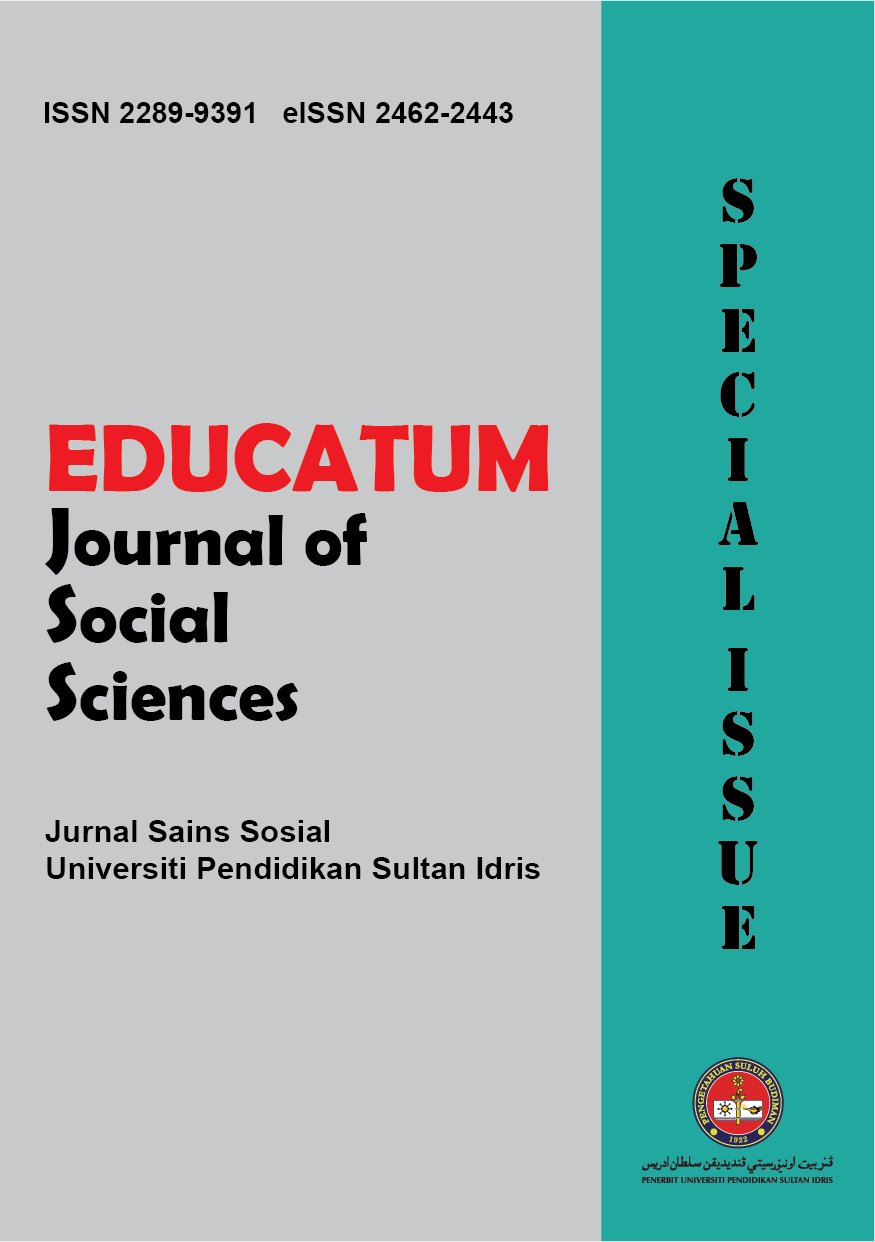The Influence of Manga and Anime on New Media Students' Creative Development
DOI:
https://doi.org/10.37134/ejoss.vol8.sp.4.2022Keywords:
New Media students, manga, Anime, education, animationAbstract
Manga and anime are popular forms of entertainment that have had a significant impact on the animation and publishing industries. The purpose of this study is to explore the influence of manga and anime on new media students in their studies as an educational tool and creativity development. By using a qualitative method, an online platform such as Google Meet was used to conduct an in-depth interview with six (6) new media students. The thematic analysis approach was used to analyse the data. This paper argues that Manga and anime provide several benefits to New Media students, including the ability to generate ideas or storylines for animation, improve judgement in their work, and serve as a reliable source of reference in their studies. Furthermore, the study finds that manga and anime have sparked a strong desire in some of the informants to pursue animation or a New Media course as a major. This research helps to a better understanding of manga and anime's impact on the lives of New Media students and how it is viewed as a useful tool in their creative thinking growth.
Downloads
References
Allen, M., Bourhis, J., Burrell, N., and Mabry, E. (2002). Comparing Student Satisfaction with Distance Education to Traditional Classrooms in Higher Education: A meta-analysis. The American Journal of Distance Education, 16, 83 – 97.
Almusharraf, N. M., & Khahro, S. H. (2020). Students’ Satisfaction with Online Learning Experiences during the COVID-19 Pandemic. International Journal of Emerging Technologies in Learning, 15(21), 246–267. https://doi.org/10.3991/ijet.v15i21.15647
Azman, F. N ., Zaibon, S. B., Azman, F. N., & Shiratudin, N. (2015). Exploring Digital Comics as an Edutainment Tool. Knowledge Management International Conference (KMICe). Universiti Utara Malaysia (UUM). Retrieved from http://repo.uum.edu.my/14695/1/K15.pdf
Chambers, Samantha Nicole Inez (2012). Anime: From cult following to pop culture phenomenon. Elon Journal of Undergraduate Research in Communications, 3(2), 94-101.
Chan, Y. H., Wong, N. L., & Ng, L. L. (2017). Japanese language students’ perception of using anime as a teaching tool. Indonesian Journal of Applied Linguistics, 7(1), 93–104. https://doi.org/10.17509/ijal.v7i1.6862
Corpuz, L. J. R. (2020). Anime With English Subtitles: Tool in Expanding Second Language Learners’ Vocabulary and Syntactic Complexity. 7(5), 1–13.
Creswell, J.W.& Poth, C.N. (2018) Qualitative Inquiry and Research Design Choosing among Five Approaches. 4th Edition, SAGE Publications, Inc., Thousand Oaks.
Draper, J. M. (2015). The Cool Japan Project and the Globalization of Anime and Manga in the United States. 40. http://libres.uncg.edu/ir/asu/f/Draper, Joshua Spring 2015.pdf
Erika Junhui Yi (2018). Anime Fandom in Convergence Culture: A Uses and Gratification Approach to Chinese Fan ProducersAnime Fandom in Convergence Culture: A Uses and Gratification Approach to Chinese Fan Producers. Department of Communication Studies and the Graduate Faculty of the University of Kansas
Fukunaga, N. (2006). “Those anime students”: Foreign language literacy development through Japanese popular culture. Journal Of Adolescent & Adult Literacy, 50(3). https://doi.org/10.1598/JAAL.50.3.5
Han, Chan Yee|Ling, W. N. (2017). The Use of Anime in Teaching Japanese as a Foreign Language. Malaysian Online Journal of Educational Technology, 5(2), 68–78.
Hendrik van der Sluis. (2021). Manga, Graphic Novels, And Comics In Higher Education? 7(1), 24–30.
Hassan, N. A., Sallehiuddin, I. S., Aziz, N. N. (2016). Study on Anime and Its Impacts Among University Students. University Tunku Abdul Rahman. Retrieved November 4, 2020
Hubka, D. (2002) Globalization of Cultural Production: The Transformation of Children’s Animated Television, 1980-1995. In D. Crane, N. Kawashima, K. Kawasaki (Eds.) Global Culture: Media, Arts, Policy, and Globalization. New York: Routledge.
Ikue Kunai., & Ryan, C. C. S. (2007). Manga as a Teaching Tool: Comic Books Without Borders. Proceedings of the CATESOL State Conference, 1–9. https://files.eric.ed.gov/fulltext/ED526420.pdf
Iza Sharina Sallehuddin, A., & Omar, F. I. (2011). The Perceived Impact Of Anime On School Children’ S Aggressive The Perceived Impact Of Anime On School Children’ S Aggressive Behaviour. Proceeding at the LANCOMM International Conference, October. https://doi.org/10.13140/RG.2.1.1519.7608
Katsuno, Hirofumi and Maret, Jeffrey. "5. Localizing the Pokémon TV Series for the American Market". Pikachu's Global Adventure, edited by Joseph Tobin, New York, USA: Duke University Press, 2004, pp. 80-107.
Lavrakas, P. J. (2008). Purposive Sample. In Encyclopedia of Survey Research Methods. Retrieved November 5, 2020, from https://methods.sagepub.com/reference/encyclopedia-of-survey-research-methods/n419.xml
Lent, J. A. 2015. Asian Comics [Kindle Edition]. Mississippi: University Press of Mississippi
Levi, A. (1996) Samurai from Outer Space: Understanding Japanese Animation. Chicago: Open Court.
Mahaseth, H. (2018). The Cultural Impact of Manga on Society. Asian Journal of Language, Literature and Culture Studies,1(3). DOI: 10.2139/ssrn.2930916
Manion, A. (2005) Discovering Japan: Anime and Learning Japanese Culture. Master’s thesis for U of Southern California. (http://www.chanpon.org/archive/manionthesis.pdf)
Moonlitasteria. (2015). The School Student Perspective In Anime And Manga [Blogpost]. Retrieved from https://moonlitasteria.wordpress.com/2015/09/25/the-school-student-perspective-in-anime-and-manga/amp/
Murakami, Satsuki & Bryce, Mio. (2009). Manga as an Educational Medium. The International Journal of the Humanities. 7. 47-55. 10.18848/1447- 9508/CGP/v07i10/42761.
Neuman, W. L. (2011). Strategies of Research Design. In W. L. Neuman, Social Research Methods: Qualitative and Quantitative Approaches (Seventh ed., pp. 179 -181). Boston
Medhat, Salma (2014). Anime, a universal language defying boundaries: An applied study on sample of Egyptian youth. In Official Conference Proceedings, MediAsia FilmAsia: The Asian Conference on Media & Mass Communication (pp. 315- 328). Nagoya, Japan: International Academic Forum.
Sundar, S. Shyam ; Limperos, Anthony M. (2013). Uses and Grats 2.0: New Gratifications for New Media. In: Journal of Broadcasting and Electronic Media. 57(4). pp. 504-525
Vinney, C. (2019). What Is Uses and Gratifications Theory? Definition and Examples. Retrieved November 04, 2020, from https://www.thoughtco.com/uses-and-gratifications-theory-4628333
Zakaria Dalil (2015). Manga and Anime: A Gateway to the Japanese Culture The Moroccan Fan Community as a Case Study. Department Of English. Communication In contexts. Moulay Ismail University school Of Arts and humanities





